Travel Tips
Travel Guidebook Writer Christine Barrely: A Peer to Pier Interview
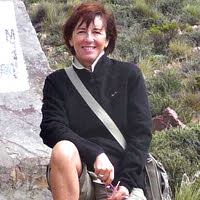 World traveler Meg Pier first came into contact with guidebook writer Christine Barrely through a home exchange, and over time the two discovered a shared love for travel and photography.
World traveler Meg Pier first came into contact with guidebook writer Christine Barrely through a home exchange, and over time the two discovered a shared love for travel and photography.
Find out why being a guidebook writer isn’t nearly as glamorous as it seems, and what world experiences stand out to someone who covers travel for a living.
Christine Barrely, 53, is the author of more than 20 travel books published by Hachette Livres and Michelin Guides, among others. Countries she has written about include her native France as well as Argentina, Croatia, England, Greece, Ireland, Spain and different parts of the U.S.
Meg Pier: You are from Brittany, France. Can you describe the area?
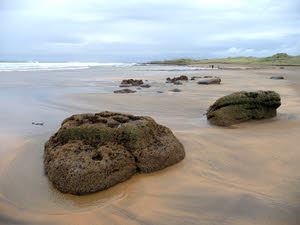 Christine Barrely: Brittany is a broad peninsula sticking out in the Atlantic Ocean, on the west coast of France. It is a Celtic country, deeply influenced by legends and mysticism, full of colorful traditions. The inland landscapes are forests, gentle hills and austere medieval cities built in gray stones.
Christine Barrely: Brittany is a broad peninsula sticking out in the Atlantic Ocean, on the west coast of France. It is a Celtic country, deeply influenced by legends and mysticism, full of colorful traditions. The inland landscapes are forests, gentle hills and austere medieval cities built in gray stones.
But to me, Brittany is essentially synonymous with the Atlantic. Its coasts vary from craggy heads, barren moors growing purple heather, narrow sandy coves, long dunes battered by the waves and tiny fishing ports smelling of fish, drying nets and fresh paint. I was born by the sea and lived most of my life near it, until the last few years. I suppose I actually never recovered from leaving it. Later on I would photography it tirelessly.
MP: How did you embark on a career as a travel guide book writer?
CB: I was approached by a major publisher to read a manuscript they were not sure about. They wanted an outside critical view on it. … But after just two hours of reading, I realized it was really bad and could definitely not be published. So I wrote a note justifying that judgment, explaining that I could not take the contract and the money as I had already reached the conclusion. It is when they offered me to write the book instead.
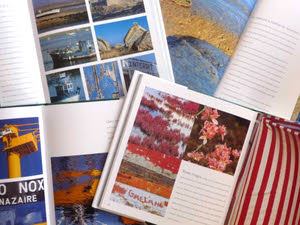 MP: What is the process involved in writing a guidebook?
MP: What is the process involved in writing a guidebook?
CB: Over the years, I reached a very trusting relationship with my publishers. Every year, when they prepare the planning of the destinations they would like to cover, they get in touch with me and ask me what would be my choice.
When that is fixed, I start the preparation, the research. It is about geography and history, politics and economy, but also literature, cinema, music, traditions. I read reference books as well as writers from the country, trying to extract their particular sensitivity. Then I get down to preparing the actual stay there, which can last up to three or four months. I plan out the routes and general organization of the book, deciding on what to emphasize.
Once in the country, it involves being very flexible, open to changes or new avenues of exploration. It means keeping an ear to the ground, being ready to talk with people and, mostly, to let them talk. It is about being curious, inquisitive sometimes.
And most of all, it means keeping very long hours, not necessarily knowing in the morning where one is going to sleep at night. It means long trips alone, unending drives or bus rides, long and tiring walks. On the fastidious side is the gathering of all the practical information about transportation, business hours, hotels and restaurants to recommend and so forth.
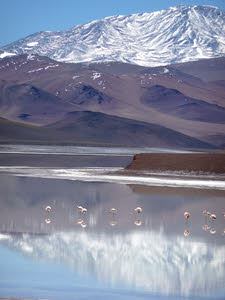 When all that is completed, I come home and settle down to write—a completely different pace. After being months on the go, one has to sit down and put in writing something that will be at the same time attractive to read, practical for the traveler and meticulously constructed so to deliver the information in a logical and intelligent pattern. A lot of the information has to be cross checked. This takes up to six months for a regular travel guide.
When all that is completed, I come home and settle down to write—a completely different pace. After being months on the go, one has to sit down and put in writing something that will be at the same time attractive to read, practical for the traveler and meticulously constructed so to deliver the information in a logical and intelligent pattern. A lot of the information has to be cross checked. This takes up to six months for a regular travel guide.
Besides the actual writing, I have taken up editing. …This is another slow process, demanding patience and exactness, while always keeping very tight deadlines. Sometimes everything goes smoothly, other times it is just mind-breaking all the way through.
The author might be very good for the “trip” part of it but useless at organizing the information, careless about the exactness of things. Sometimes I just have to rewrite everything because the style is not appropriate, too pompous or too trivial, other times the chosen plan to present a region is just not realistic.
Once, for example, I was puzzled to find that a particular author had very different styles depending on the area he was writing about, one chapter would be like a post graduate thesis, then next would be like cheap tabloid style. I went on to Google random entries and discovered that he had just grossly copied whole articles!
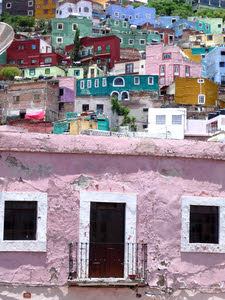 I then found out that he had spent most of his time in the country getting himself invited here and there on the strength of his assignment, having drinks in fancy places but doing none of the checking and visiting demanded by the job. So on his return, he just went on the Web and collected any information he could find!
I then found out that he had spent most of his time in the country getting himself invited here and there on the strength of his assignment, having drinks in fancy places but doing none of the checking and visiting demanded by the job. So on his return, he just went on the Web and collected any information he could find!
This is one of the dangers and limits of this work: more and more writers just think Google and the Web in general are the solution, when it is not just plagiarizing other books. One has to be very ethical and honest about it. Nothing can be a substitute of a thorough first hand discovery of the country and of a careful and critical personal research.
And a lot of it is not half as glamorous and exciting as readers would imagine! The days are long and often repetitive, visiting everything, going in and out of hotels, bars and restaurants, checking museums and monuments at top speed when you wished you had more time. The planning is always just beyond what any normal person would be able to keep, so you are forever running and feeling guilty not to have covered even more.
MP: How many guidebooks have you written? Can you single out a few and describe the experience?
Learn more in our Cultural Immersion Travel section
CB: Each one has been a special experience. … Even things that I am not going to write about, like geopolitics or the economy throw a different light on things, so I love to investigate this.
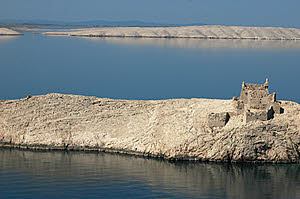 As an example, I wrote two books on Croatia, spent many months there and did extensive reading on the Balkans war, trying to understand things from each community’s point of view. In our big western nations, we tend to have a very simplistic way of judging things, using our own standards and cultural landmarks to explain the way the world is going. I found that getting down on the ground gives you a different grasp of things.
As an example, I wrote two books on Croatia, spent many months there and did extensive reading on the Balkans war, trying to understand things from each community’s point of view. In our big western nations, we tend to have a very simplistic way of judging things, using our own standards and cultural landmarks to explain the way the world is going. I found that getting down on the ground gives you a different grasp of things.
On a much lighter note, the thing I enjoy most is meeting people of all avenues of life. When I arrive somewhere, I usually take a walk around, without any exact plan. I just let my steps take me, sit down in cafés, in town parks, going to the market. When you travel alone, things happen much more easily. People sort of feel sorry for you, especially when you are a woman, and they don’t feel threatened, so conversations flow very quickly. Even with the language barrier, you get to communicate.
Don’t make a cultural faux pas–check out our Global Travel Etiquette section.
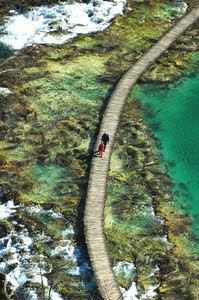 This is the best way for a travel writer to get interesting bits of information, to know the places where the locals go, what they do, what they talk about.
This is the best way for a travel writer to get interesting bits of information, to know the places where the locals go, what they do, what they talk about.
Very often, I was invited to visit people’s homes, learn of their tradition, of the family history, many details giving texture to my understanding of the place. I learn to cook unexpected fares, got to taste new things, attended private religious celebrations, slept on the floor carpets in Turkey, got eaten away by bugs in a grotty place in Argentina, ate unidentifiable insects in China, chewed coca leaves with Indians from the Andes.
MP: Have you ever gotten lost and had an experience you wouldn’t have wanted to miss?
CB: To me this is what travel is about, being ready for the unknown. If you prepare too much, if you know in advance what you are going to do, nothing very special is likely to happen. One day in China, I went to take a bus and asked at the counter for the ticket. When I got to the bus, the guy told me I had got the wrong ticket and that I was booked for a completely different place. I did not understand how far it was but I decided to board that bus.
Traveling in China? Get informed with our China Travel section.
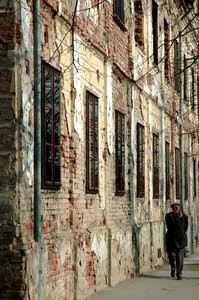 I was the only non-Chinese on board. We drove for three hours and arrived in one of the most beautiful villages I ever visited, very secluded. It was like going back two centuries. And that particular day, all my photos failed (a guy in a photo shop opened my camera) so it is like nothing was left, a bit like the imaginary journey of Alice in Wonderland!
I was the only non-Chinese on board. We drove for three hours and arrived in one of the most beautiful villages I ever visited, very secluded. It was like going back two centuries. And that particular day, all my photos failed (a guy in a photo shop opened my camera) so it is like nothing was left, a bit like the imaginary journey of Alice in Wonderland!
MP: Have you ever experienced a scary situation when traveling?
CB: I suppose I’ve done a lot of very unreasonable things over the years, like driving dangerous roads, going to unsecure places at night, meeting rough people, but I was never really frightened.
My worst memory, and at the same time one of the most impressive, is of the day I went to Shiprock, in New Mexico. I was driving a small car, I had decided to spend the afternoon at the Shiprock pinnacle, a sacred spot for the Navajos. … I spent several hours circling around the steep cliffs of solidified lava.
Then, noticing some tracks leading away from the rock, I thought I could take nice pictures from a distance. I looked at the map and saw that one of these tracks was leading to another main road I could take to get back. I took what looked like the main one. The afternoon had become evening. I stopped several times for photos, not realizing that the track was getting narrow and deeply entrenched that it would be impossible to turn around.
Get hints for your photos in our Photography & Photo Galleries section.
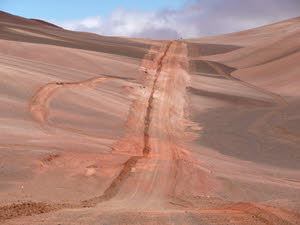 In places I could hardly progress as the bottom of the car was trailing on the ground. It was dark by then and I could still not turn round anywhere. I put my headlights on. I drove on for hours, but the main road was still nowhere in sight. I was lost.
In places I could hardly progress as the bottom of the car was trailing on the ground. It was dark by then and I could still not turn round anywhere. I put my headlights on. I drove on for hours, but the main road was still nowhere in sight. I was lost.
The car was getting low on gas and I was feeling like a fool, thinking I would have to spend the night there in the desert? At the beginning of April, nights get very cold. I was just wearing Bermuda shorts and a T-shirt.
And then, as I was just going to give up and wait for dawn, I saw a moving ray of light in the distance ahead. It was the lights of a car, going at full speed from left to right, it was the main road! I just kept mumbling “please, let me get to it, right to it, no more bends” and I eventually reached the road.
For driving tips, check out our Car Rental & Driving Vacations section.
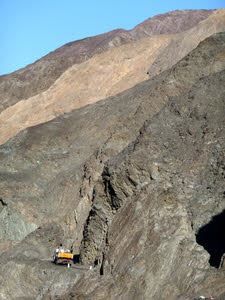 I just made it to the junction and the gas station. I don’t think I could have driven 2 more miles! It was about 1 a.m. At the time, it was a bit stressful but looking back on it, I brought back nice pictures and never forgot Shiprock!
I just made it to the junction and the gas station. I don’t think I could have driven 2 more miles! It was about 1 a.m. At the time, it was a bit stressful but looking back on it, I brought back nice pictures and never forgot Shiprock!
MP: You travel both as a vocation and an avocation—how has writing professionally about other lands affected your travel experiences for pleasure?
CB: To be honest, doing this professionally spoils it when I go on holidays, at least for the first few days, as I am too alert to whatever might be of interest. I am trying too hard to make the best use of every minute. I keep track of road numbers, timetables, all sorts of practicals. But when I unwind a bit, the best is left which is the speed to find the good places (experience!), the ability to make friends quickly and the capacity to keep totally calm when things go wrong.
MP: Both travel and photography have involved for me incredibly serendipitous experiences. Is there a specific recollection you have of such a moment in your travels?
CP: I could not pick just one example, there are so many! It can be the ray of light cast on water just at the instant a boat is sailing by, or it can be a fishing bird landing on its old Chinese master’s wrist with a big fish just when you are shooting him. Some photos I took over the years, I was never able to catch the same emotion again. It was just that, a unique instant.
The very same applies to meeting people. Sometimes, you meet somebody and after 5 minutes it’s like you know this person since childhood, like a museum curator in Vukovar, a photographer in Brittany, a community worker in Harlem, a Native American in Taos and so on … I can’t pinpoint anyone more than the others. They just happened at the right time, for a particular day, in a particular purpose.
Text by Meg Pier. Photos courtesy of Christine Barrely. To read more from this interview, visit Meg’s Web site, www.viewfromthepier.com.
Related links on PeterGreenberg.com:












